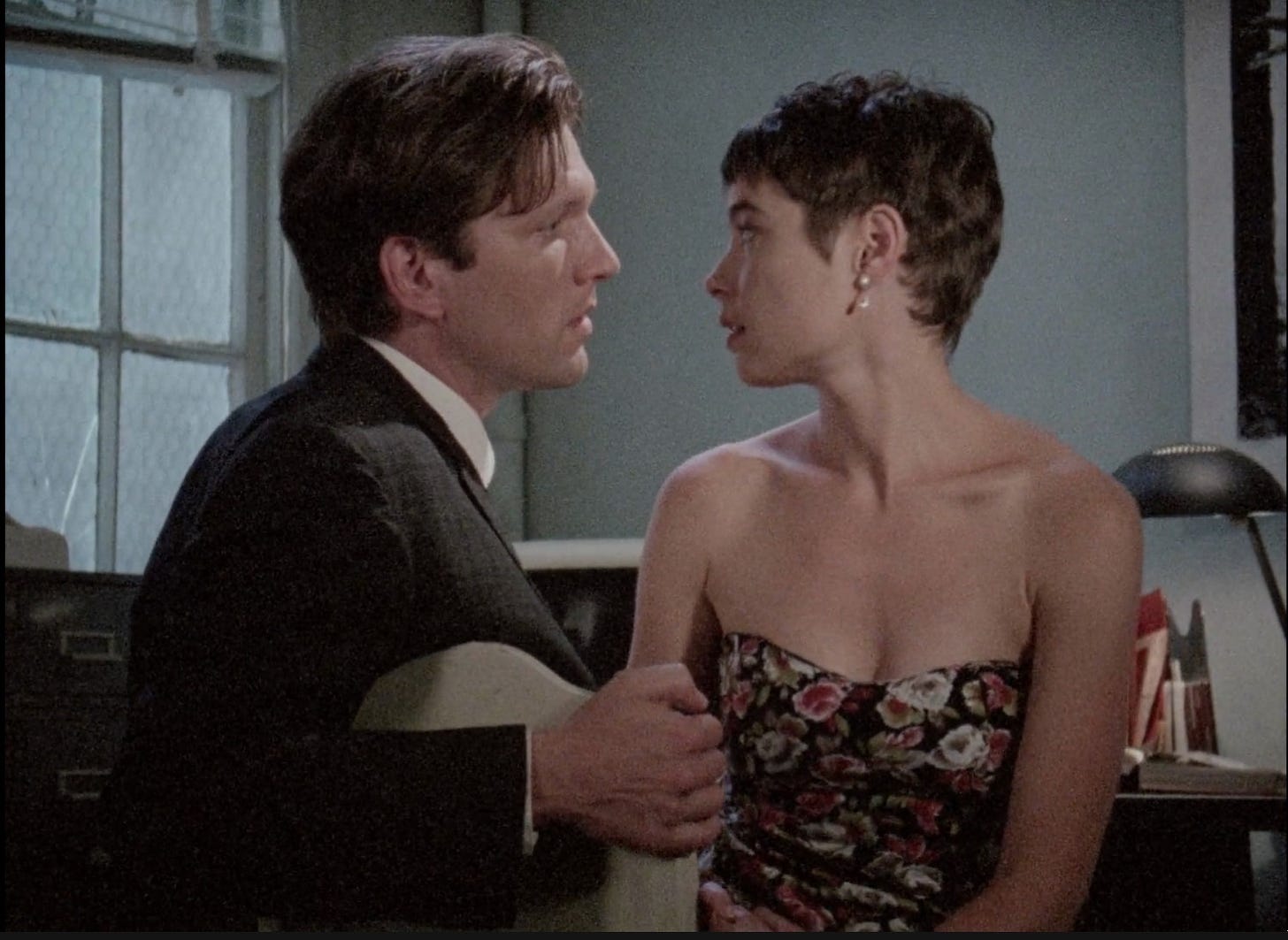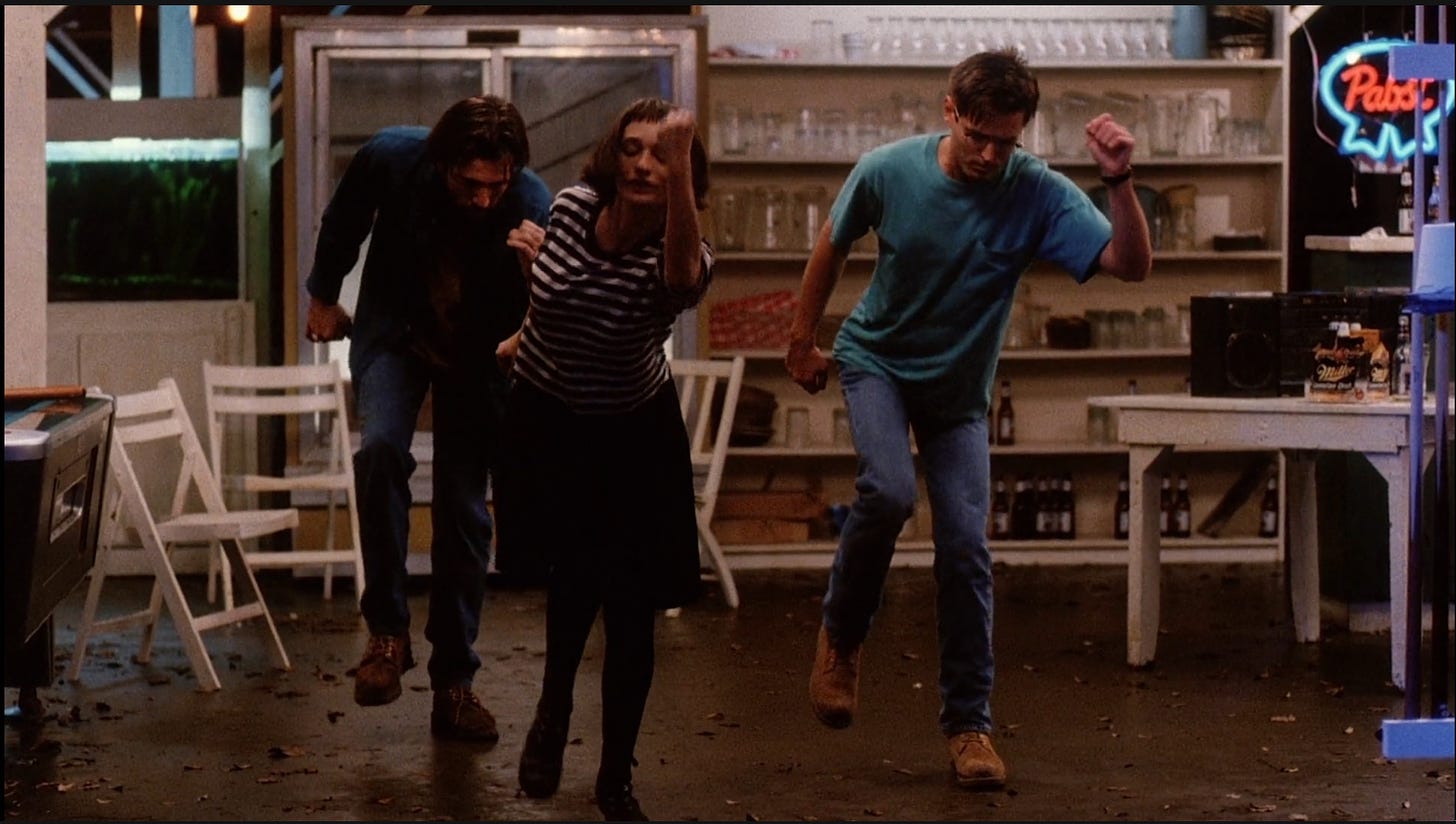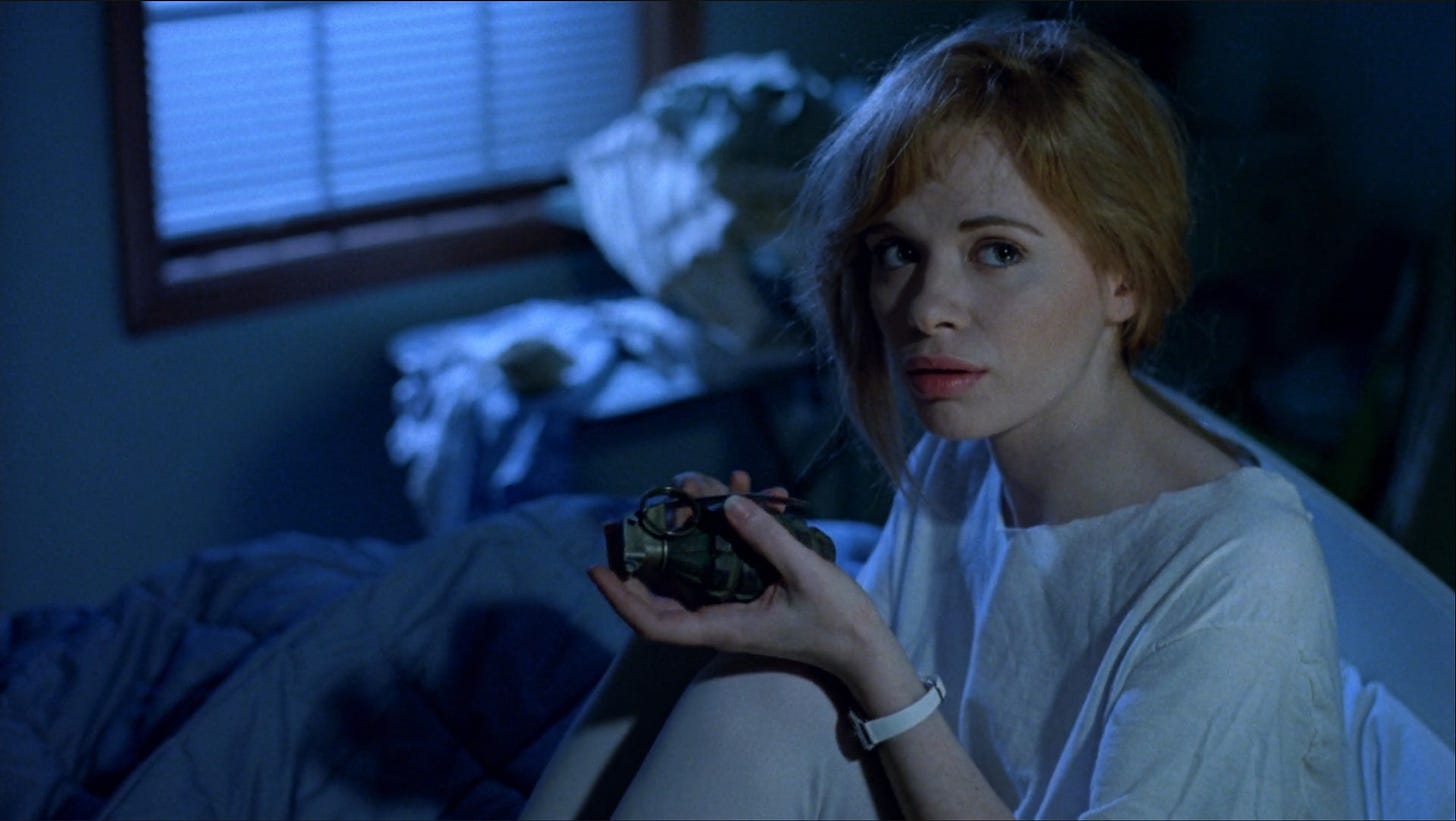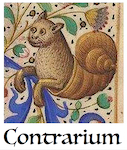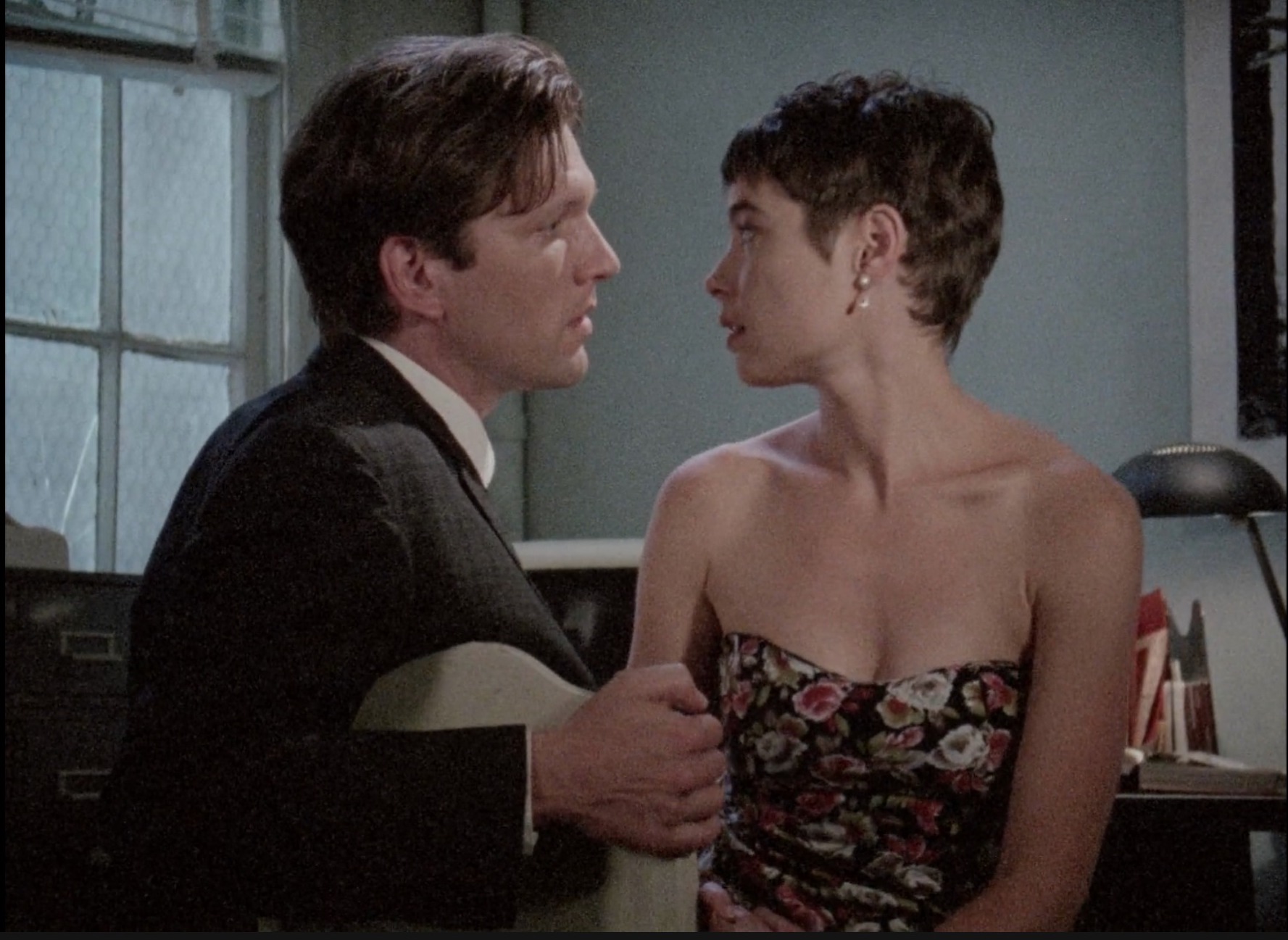The Criterion channel has been doing a Hal Hartley retrospective, so I decided to watch or re-watch some of his films. As you may know, Hartley was one of the indie cinema darlings of the early 1990s, together with the likes of Jim Jarmusch and others.
Jarmusch is still around, but Hal Hartley, which had been my favourite at the time, more or less disappeared, at least from the mainstream discourse. His last successful film was “Henry Fool”, in 1997, and the last one he made, so far, is “Ned Rifle” which came out in 2014 and is in fact the closing of a trilogy that started with “Henry Fool”. But he hasn’t made any film since.
Watching again his movies was interesting. Many of the early ones haven’t completely lost the appeal. Trust (1990), one of his best films of his early period, still holds up pretty well. Simple Men (1993) is even better than I remembered it. Amateur (1994) may have a few dated jokes, but otherwise remains funny and engaging, and has Martin Donovan, Isabelle Huppert and Elina Löwensohn in great roles.
I hadn’t watched The Book of Life (1999) and No Such Thing (2001) back then, and I knew they had mostly negative reviews. Watching them now, and I must say that the mixed reviews are in many ways justified.
The Book of Life feels more like a somewhat interesting but dated experiment. The best thing about it is Miho Nikaido — I didn’t know, but she’s actually Hartley’s Japanese wife — as a good-hearted waitress whose soul is sold by her boyfriend to the Devil. But can one sell someone else’s soul? The theology of the film is inconsistent, but the film is short and has a few interesting bits. Martin Donovan plays Jesus, Thomas Jay Ryan plays Satan and singer P. J. Harvey plays Mary Magdalene.
No Such Thing (2001) is Hartley’s only big budget movie. It has beautifully photographed Iceland landscapes, decent make-up and effects, and the general look of a mainstream production, as well as big-name actors such as Helen Mirren and Julie Christie in important roles. In some ways a variation on the myth of Beaty and the Beast, it has young Sarah Polley in the protagonist’s role, the dantesque Beatrice, while Hartley’s regular Robert John Burke plays the monster.
While the film is well-directed and has a nice soundtrack — Hartley is also a talented musician and composed the music for many of his films, but he says that it was just to save money, as obtaining music rights can be expensive — the screenplay, perhaps surprisingly, is its weakest part.
Characterizations are inconsistent. Beatrice acts one day like a suffering martyr, the next like a callous whore. She rejects the sensationalization of being the sole survivor of a plane accident, only to giddily accept later on to become “famous” presenting the monster to the press. The rhythm is uneven and the ending is confusing. [SPOILER: It seems to me that what happens or is implied by the ending is that the monster was just Beatrice’s dream or imagination during her surgery, after which she dies or ends up in a coma (i.e. the monster dies = she dies). This would explain why the machine where the monster is placed looks so much like the machine of her surgery, and also why the doctor (played by Julie Christie) is incongruously present assisting in this scene. But it could be just a personal interpretation.]
After this failed project — it bombed big time — Hartley directed mostly shorts or experimental films with limited distribution, or sometimes, no distribution at all.
Not everything is bad, though. The Henry Fool trilogy (discussed below) is interesting, and Meanwhile (2011) is a little light-hearted film (under one hour) about New York City which is, all in all, pretty nice. But, as the title implies, it feels a bit like something done “meanwhile” waiting for funding for more ambitious projects.
The Henry Fool trilogy
Henry Fool (1997) was the most critically and commercially successful of all Hartley’s films, but, despite having many good things going for it, it was never my favourite. However, now, after having watched the full trilogy, I think the first film becomes more interesting in retrospect. The sum is larger than its parts.
Fay Grim (2006), the second instalment of the trilogy focusing on Henry’s wife is, to put it mildly, problematic. The story is so convoluted it becomes hard to follow, and many scenes are over the top. Hartley had already played with spoofing the spy or thriller genre in Amateur, but here it is not clear how much of it is to be taken seriously or not. The film starts as a zany comedy but it shifts tone somewhere towards the middle and concludes with more serious drama and political intrigue.
On the other hand, it has Elina Löwhenson returning in a funny role, Parker Posey is also endearing as the protagonist, and there’s Jeff Goldblum too. The idea of the Henry character as a hapless amoral bastard with no great talent of his own, but who however inspires others to do great things — to become great poets, in the first movie, or, in this one, great terrorist leaders — is interesting. But the film feels incomplete, or perhaps botched.
Ned Rifle (2014), however, the third and final part, is pretty good, and in some ways a return to the smaller, intimate, character-driven films of his early period. Liam Aiken as Ned (Fay and Henry’s son) does a pretty good job, and is one rare instance of a Christian character shown in a positive light. It is also interesting that he played the same character for the first time in Henry Fool, when he was 7 years old, then in Fay Grim at 16 (but playing a 14-year old), and here he plays him again, at 24 (although his character is supposedly 18-year old). Another curiosity is that “Ned Rifle” was Hartley’s pseudonym as music composer in his early movies. The name also appears in fake book covers, for instance in Trust.
Aiken as Ned is alright, but it is bad girl Susan (Aubrey Plaza) who steals the show, especially after she gets together with Henry (Thomas Jay Ryan) in the later part of the film. It is also nice to see Martin Donovan returning in a small but significant role as a reverend.
Surviving Desire
Less is more. In the end, my favourite film of those I watched or rewatched was Surviving Desire (1992), which is as charming as I remembered way back then, and is perhaps Hartley’s masterpiece. Just one-hour long and focusing on very few characters in a small university town, with events happening over just a couple of days, it has the unity of time, place and action of a Greek tragedy, but feels more like a little comedy or short story turned into a film. The main character, played by Martin Donovan, is a literature professor who falls in love with a student (Mary B. Ward) who works part-time in a book store. Literary references abound, from Dostoevsky to Shakespeare to the Bible to Anatole France, but lightened by Hartley’s characteristic deadpan humour. Nothing much happens, and yet, the characters stay with you.
Completing the package is The Theory of Achievement (1991) a short movie created around the same time of Surviving Desire. It is also quite nice. It features a group of broke young wannabe artists living in Williamsburg, Brooklyn, at a time when only broke young wannabe artists lived there — that is, just a few years before it was gentrified and occupied by tourists, Puerto Rican immigrants and Hasidic Jews. It features Elina Löwehnsohn in her first film role.
There is a scene in Ned Rifle where Susan (Aubrey Plaza) eulogizes Simon Grim’s poems, delivering a speech about the artistic supremacy of “decisive, committed, admittedly obscure work, indifferent to mainstream approval and unafraid of moral and aesthetic absolutes.” This could be a good summary of Hal Hartley’s own work.
